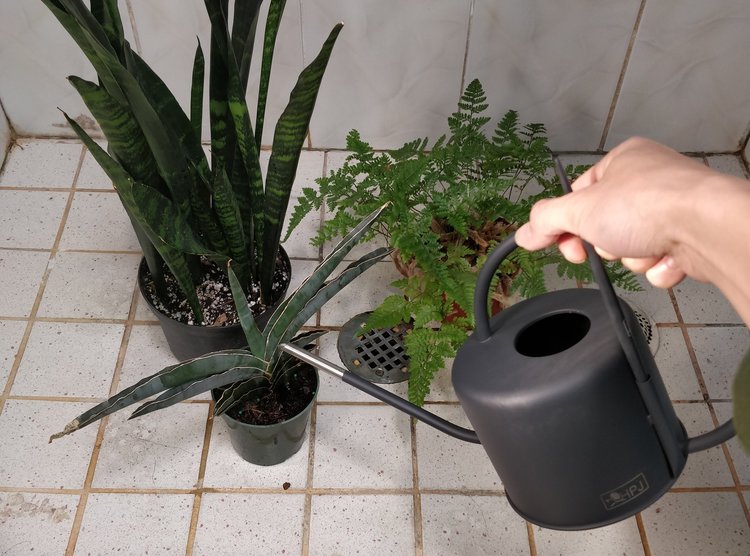You hear these all the time:
- Overwatering is the number one killer of houseplants
- It’s better to underwater than to overwater
- If your leaves are yellowing, you might be overwatering
The constant use of the term ‘overwatering’ is destroying your potential to learn how plants work because it puts the focus on the act of watering and makes you think that all there is to do is be more careful with watering.
Root rot is the reason for all the warnings about ‘overwatering’ but overly moist soil is not the sole contributor to it. Water mold bacteria in the genus Phytophthora are the agents of root rot – they thrive in
- High moisture
- Low oxygen
- They infect weak roots
The concept of ‘overwatering’ only addresses the “high moisture” that Phytophthora like. Low oxygen comes from poorly aerated soil – the way to mitigate this is with regular soil aeration (gently poking the soil with a chopstick) and using porous/well-draining components in soil, such as perlite. The last point, weak roots, is a much longer term condition to get to. Just like a starving person is more susceptible to illness, a starving plant will be at higher risk of root rot whenever the soil becomes moist and stale. A plant starves when it is in prolonged conditions of poor lighting. So when you water a plant in this condition, the soil moisture lingers. Put the same plant where it has the widest possible view of the sky, roots will be strong as the entire plant is working. So when you do moisten the soil, the roots will take up the water and use it to make sugars to feed itself. Therefore, good light is the key to preventing root rot.
Side note: please also stop thinking of fertilizer as “feeding” the plant. Fertilizers are like a vitamin/mineral supplement. A plant makes its own sustenance by photosynthesis. There is no replacement for light!

So warning about ‘overwatering’ should really be replaced by advice on where you should put your plants to prevent poor plant nourishment. My guideline for plant placement is this: ask #whatmyplantsees – make sure your plant has the widest possible view of the sky and check for its tolerance for direct sun (i.e. number of hours it can tolerate). In this position, assuming your soil is compatible with the particular plant, you can safely bring the soil to saturation because the plant will be receiving enough light to use up the soil moisture before root rot can take hold. This is the fundamental principle of plant care. It’s not even enough to use all the most porous soil with the best drainage and terracotta pots – all you’re doing is getting the soil to dry out by evaporation. You want the soil to become dry because the plant is using it for photosynthesis – therefore, proper light is the prerequisite of proper plant care.
I realize a change in the approach to house plant care won’t happen overnight. You’ll definitely still encounter the term ‘overwatering’ but, instead of thinking “Oh, I need to be more careful with watering”, you should consider whether you are giving your plant the best possible light in your home. Be your plant and analyze #whatmyplantsees – have you given it the WIDEST possible view of the sky? There’s more to light than just having a direct view of the sun and quite frankly, most of your tropical foliage plants merely tolerate seeing the sun for an hour or two (different story for cacti and flowering plants). Start with a better understanding of light and you’ll have a more rewarding experience with house plant care.